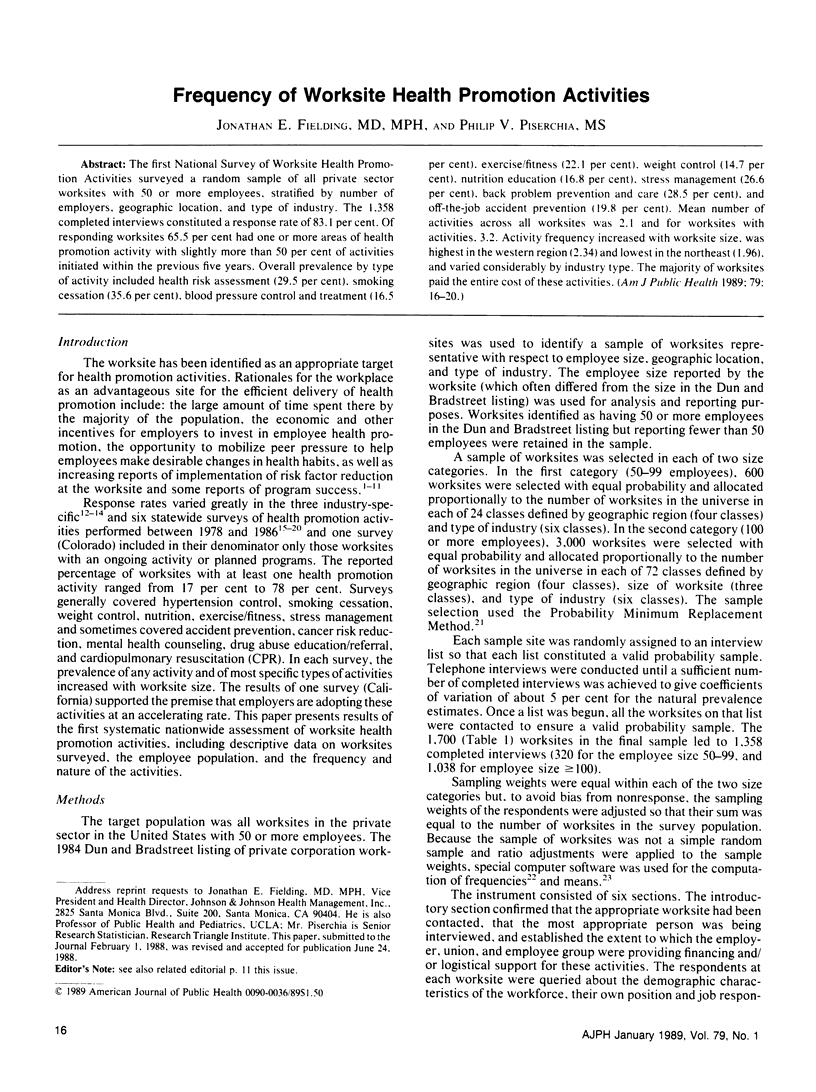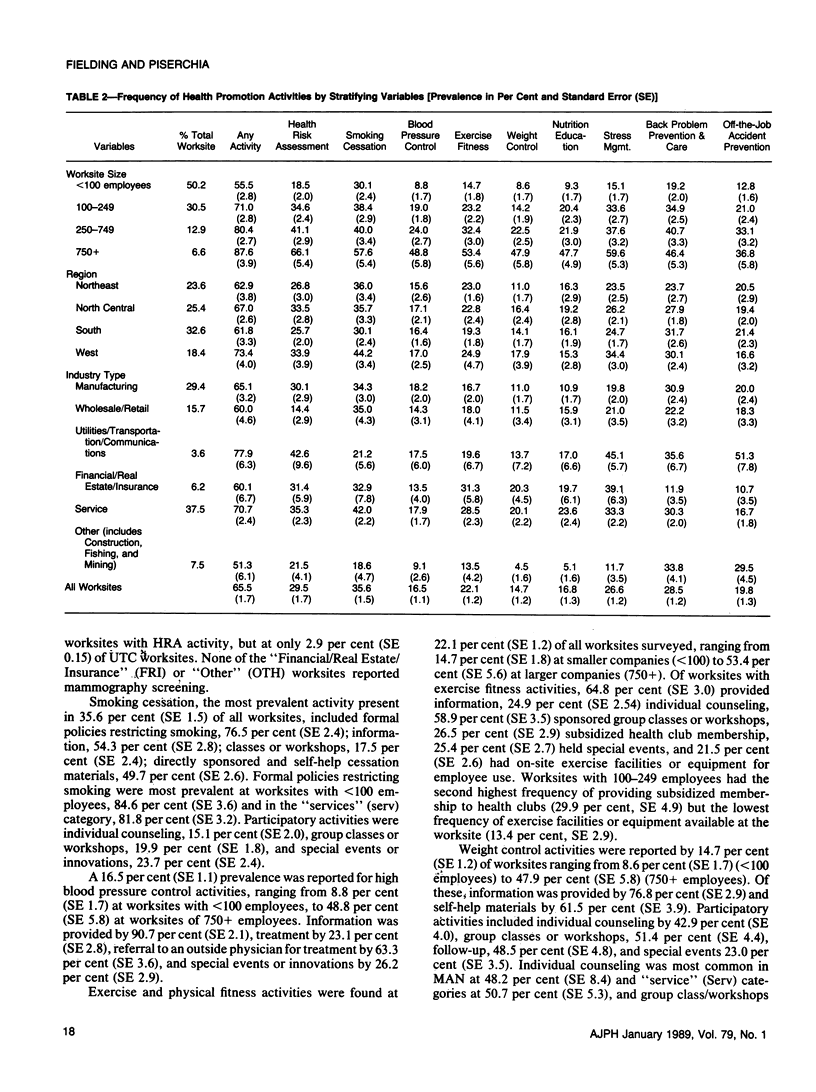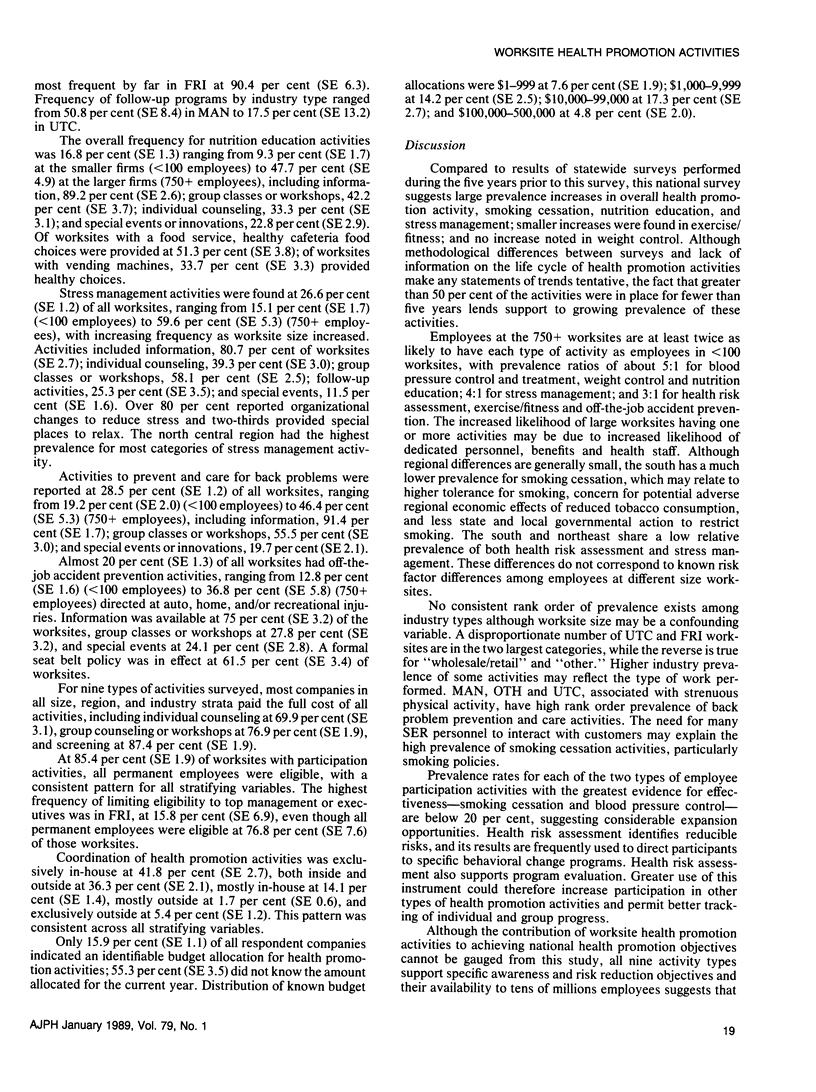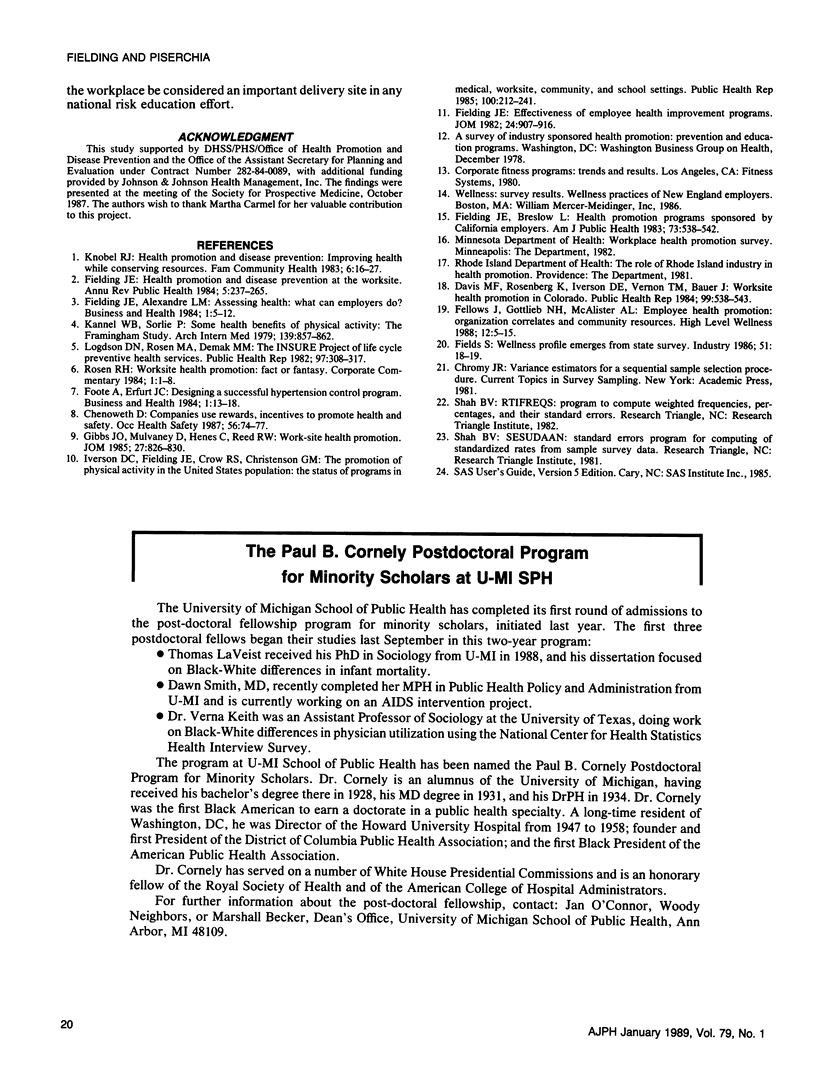Abstract
The first National Survey of Worksite Health Promotion Activities surveyed a random sample of all private sector worksites with 50 or more employees, stratified by number of employers, geographic location, and type of industry. The 1,358 completed interviews constituted a response rate of 83.1 per cent. Of responding worksites 65.5 per cent had one or more areas of health promotion activity with slightly more than 50 per cent of activities initiated within the previous five years. Overall prevalence by type of activity included health risk assessment (29.5 per cent), smoking cessation (35.6 per cent), blood pressure control and treatment (16.5 per cent), exercise/fitness (22.1 per cent), weight control (14.7 per cent), nutrition education (16.8 per cent), stress management (26.6 per cent), back problem prevention and care (28.5 per cent), and off-the-job accident prevention (19.8 per cent). Mean number of activities across all worksites was 2.1 and for worksites with activities, 3.2. Activity frequency increased with worksite size, was highest in the western region (2.34) and lowest in the northeast (1.96), and varied considerably by industry type. The majority of worksites paid the entire cost of these activities.
Full text
PDF




Selected References
These references are in PubMed. This may not be the complete list of references from this article.
- Chenoweth D. Companies use rewards, incentives to promote health and safety. Occup Health Saf. 1987 Apr;56(4):74–77. [PubMed] [Google Scholar]
- Davis M. F., Rosenberg K., Iverson D. C., Vernon T. M., Bauer J. Worksite health promotion in Colorado. Public Health Rep. 1984 Nov-Dec;99(6):538–543. [PMC free article] [PubMed] [Google Scholar]
- Fellows J., Gottlieb N. H., McAlister A. L. Employee health promotion: organizational correlates and community resources. Health Values. 1988 Jan-Feb;12(1):5–15. [PubMed] [Google Scholar]
- Fielding J. E., Alexandre L. M. Assessing health: what can employers do? Bus Health. 1984 Mar;1(4):5–12. [PubMed] [Google Scholar]
- Fielding J. E., Breslow L. Health promotion programs sponsored by California employers. Am J Public Health. 1983 May;73(5):538–542. doi: 10.2105/ajph.73.5.538. [DOI] [PMC free article] [PubMed] [Google Scholar]
- Fielding J. E. Effectiveness of employee health improvement programs. J Occup Med. 1982 Nov;24(11):907–916. [PubMed] [Google Scholar]
- Fielding J. E. Health promotion and disease prevention at the worksite. Annu Rev Public Health. 1984;5:237–265. doi: 10.1146/annurev.pu.05.050184.001321. [DOI] [PubMed] [Google Scholar]
- Foote A., Erfurt J. C. Designing a successful hypertension control program. Bus Health. 1984 Mar;1(4):13–18. [PubMed] [Google Scholar]
- Gibbs J. O., Mulvaney D., Henes C., Reed R. W. Work-site health promotion. Five-year trend in employee health care costs. J Occup Med. 1985 Nov;27(11):826–830. [PubMed] [Google Scholar]
- Iverson D. C., Fielding J. E., Crow R. S., Christenson G. M. The promotion of physical activity in the United States population: the status of programs in medical, worksite, community, and school settings. Public Health Rep. 1985 Mar-Apr;100(2):212–224. [PMC free article] [PubMed] [Google Scholar]
- Kannel W. B., Sorlie P. Some health benefits of physical activity. The Framingham Study. Arch Intern Med. 1979 Aug;139(8):857–861. [PubMed] [Google Scholar]
- Knobel R. J. Health promotion and disease prevention: improving health while conserving resources. Fam Community Health. 1983 Feb;5(4):16–27. [PubMed] [Google Scholar]
- Logsdon D. N., Rosen M. A., Demak M. M. The INSURE project on lifecycle preventive health services. Public Health Rep. 1982 Jul-Aug;97(4):308–317. [PMC free article] [PubMed] [Google Scholar]
- Rosen R. H. Worksite health promotion: fact or fantasy. Corp Comment. 1984 Jun;1(1):1–8. [PubMed] [Google Scholar]


